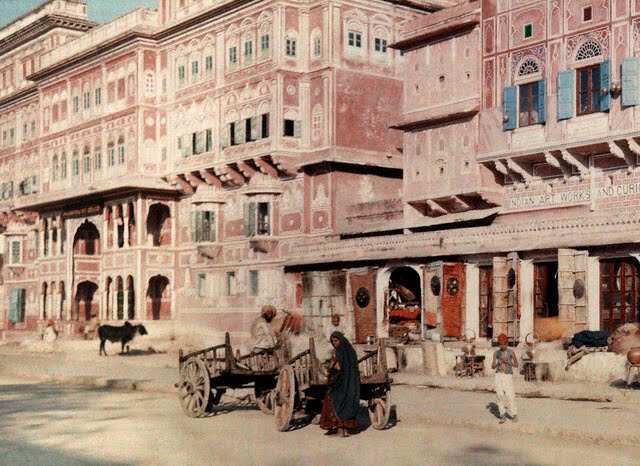Jaipur, also known as “Pink Nagar”, is the capital of Rajasthan state of India. The city is famous all over the world for its rich historical heritage, grand palaces, unique architecture and lively markets. Jaipur is not only a major city of Rajasthan but also a big tourist center which attracts millions of domestic and foreign tourists every year.
History and establishment
Jaipur was founded in the 18th century by Maharaja Sawai Jai Singh II of Amer. In view of the Amer Fort and its limited water supply, Sawai Jai Singh decided to build a new, planned city. Construction of Jaipur started in 1727 AD. It is considered to be the first planned city in India, which was settled according to the principles of Vastu Shastra and Crafts. The outline of this city was prepared by the famous architect Vidyadhar Bhattacharya.
architecture
The architecture of Jaipur is unique. The entire city was settled on the grid system, with wide roads, organized markets and square residential areas. The biggest feature of the city is its pink colored buildings, which in 1876 the entire city was painted with pink to welcome the Prince of Wales. Major architectural heritage includes Hawa Mahal, City Palace, Jantar Mantar (which is also the UNESCO World Heritage Site), and Amer Fort. The five -storey forged windows of Hawamahal and the astronomical structures of Jantar Mantar are amazing examples of its excellent architecture.
Population and area
Jaipur is the largest city in Rajasthan. According to the estimated census of 2021, Jaipur has a population of over 42 lakhs. It is one of the fastest growing metros in the country. The total area of Jaipur is about 467 square kilometers. Diversity is seen in the population here – Rajasthani, Marwari, Sindhi, Punjabi, Muslim and Jain communities live here in large numbers.
Culture
The culture of Jaipur is full of Rajput traditions, folk art and festivals. The traditional music, dance, folklore and fairs here attract tourists a lot. Events like Gangaur, Tejaji, Kajali Teej, and Jaipur Literature Festival are cultural identity here. Women wear traditional lehenga-choli and male safa. Handicrafts, colorful turban, jewelry and embroidered clothes are famous all over the world.
Market
The markets of Jaipur are its pride. The markets here are not only the centers of trade, but also show a lively glimpse of the culture here. Johri Bazaar is famous for gold-silver jewelery, while Bapu Bazaar and Nehru Bazaar are famous for clothes, shoes and handicrafts. Tripolia market is the oldest market for Rajasthani handicrafts and traditional jewelery. The Mohri quilt, block printing clothes and Meenakari jewelry found in Jaipur are very popular among tourists.
Industry
Industrial development of Jaipur is also notable. Handicrafts, jewelery manufacturing, glass industry, carpet manufacturing and textile industries are prominent among traditional industries. Along with this, Jaipur is now emerging rapidly in the field of information technology and education. Industrial areas like Mahindra World City, EPIP Citizon have played an important role in establishing Jaipur as a modern commercial city. The tourism industry is a major part of the economy of Jaipur, which provides employment to millions of people.
conclusion
Jaipur is a city that presents a wonderful confluence of history, tradition and modernity. The unique architecture, lively market, rich cultural heritage and developing industrial structure here include it among the most magnificent cities in India. Jaipur is not only the pride of Rajasthan, but it also shows the cultural soul of India.
